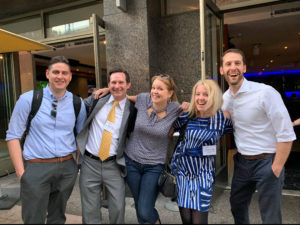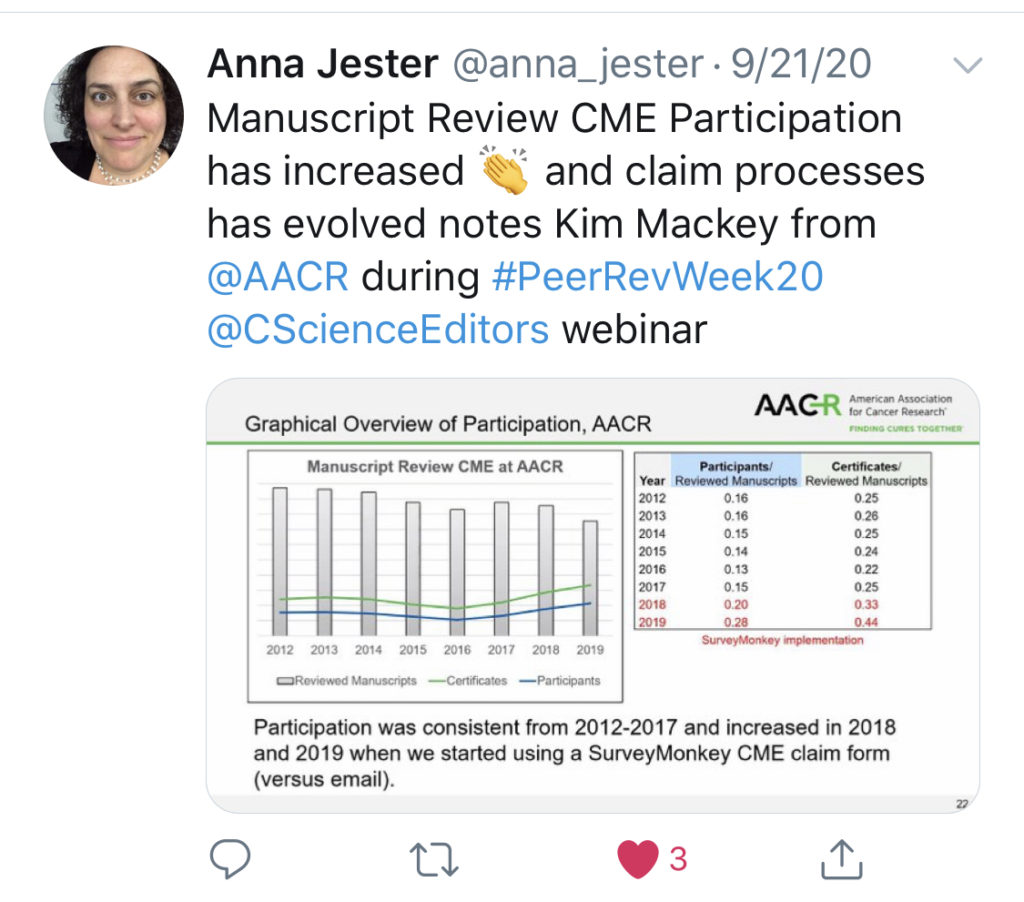FOMO. I learned this one from my kids. It stands for “fear of missing out.” As a scholarly publishing professional, I do love me a good acronym. This one is particularly apt when it comes to describing that nagging feeling that plagues all of us. We all have our favorite conferences and meetings: CSE’s Annual Meeting, the Society for Scholarly Publishing’s Annual Meeting, the annual and section meetings of our own societies, regional industry happy hours, vendor-sponsored user groups, and the list goes on. In a non-COVID year, it is impossible to attend every meeting I want to go to. There are travel budgets, my job duties, my family, and other responsibilities to consider. I’m forced to evaluate very carefully which meetings I will attend and why.

Now, since March of 2020, we all have the opposite problem. Suddenly working from home 100% of the time. Because travel is out of the question, I am faced with a different dilemma. Budget is no longer as much of an issue—many conferences are free or greatly reduced in price. The most knowledgeable and renowned scholarly publishing speakers are suddenly tantalizingly within my reach. In theory, I could attend exponentially more conferences than I ever have before. But… I just don’t. Like all of you, I work really hard all day and spend a lot of time on GoToMeetings, Zoom, Microsoft Teams, Google Meet, you name it. The rest of the time I am staring at my screen and trying to make deadlines. Plus add my new role as a virtual learning facilitator for my children, and I just don’t have it in me to take advantage of this sudden accessibility.
Let’s talk about accessibility for a minute. One of those “silver linings” in these “unprecedented times” (groan, I’m ready for some good old-fashioned precedented times!) is that conferences and meetings not everyone could attend are now in reach for anyone with an Internet connection. However, have we truly attained accessibility to the amazing resources that these meetings present? I don’t think so. We only have so much bandwidth and time in the day while corralling home life and demanding jobs to add any more commitments to our schedules. It’s still important for us to keep up with industry trends and education, though, so how can we make that happen?
That is where social media becomes important. I first realized the brilliance of the conference tweetorial (one of my American Urological Association colleagues, Taylor Titus, introduced me to this clever term) in January of 2019. Most of you will remember that our biggest pre-pandemic disruption in the world of scholarly publishing was Plan S. At the APE Conference in Berlin, Robert-Jan Smits, formerly the Special Envoy of the European Commission for Open Access and Innovation, European Strategy Centre, and a mastermind of cOAlition S, addressed the audience with a keynote speech, “Plan S: Accelerating the Transition to Full and Immediate Open Access by 2020.” I did not have the budget or the flexibility with my family to travel all the way to Germany, but I did discover the power of the live tweet. I will never forget following along as conference attendees typed, in real time, the message that Smits delivered, the questions he was asked, and the mood of the room. I remember feeling relief from those tweets after spending much of fall 2018 in a lather about how to handle the Open Access changes as laid out in Plan S. The people in that room were able to communicate to me, reading from my phone, that Plan S perhaps was not as much of an immediate threat as many believed. I will never forget how those tweets made me feel included in the meeting.

Once I had that taste of live tweeting done well, I couldn’t get enough. Whenever I cannot make a meeting, I follow conference hashtags closely. And when I can make meetings, I make sure to repay the favor as best as I can. I take photos of speakers and slides, I quote important pieces of the presentation, and I summarize main points. This live tweeting has had the side benefit of forcing me to pay attention and focus on what speakers are saying. I find I get so much more out of a talk when I am capturing its message from tweets. Plus, it’s a great way to meet and network with other people! I have continued following tweets from others or live tweeting myself during this time of virtual conferences, too.
It is important to remember these important tips, whether you’re attending the conference or live tweeting it:
- Before the conference or meeting starts, check to see what its hashtag is. Always use this hashtag in your tweets if you attend the meeting or search the hashtag if you’re following along.
- If you are live tweeting, be sure that the meeting and/or its speakers will allow you to share their content. This one is important!
- If you are attending or live tweeting, pay attention to what everyone else is saying, too. Feel free to correspond with other individuals whether you are there or not. You’ll learn so much more from this organic interaction.
- Always be respectful. Even if you don’t agree with certain opinions, it’s always free to be nice and to comb your hair.
I am eager to hear from all of you. Follow me on Twitter @JenniferARegala to talk more about how to get the most out of meetings using Twitter, social media topics you’d like to see me cover in the future, and anything else that’s on your mind!
Jennifer Regala is Director of Publications/Executive Editor at the American Urological Association.
